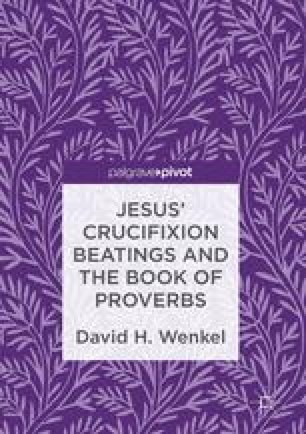Apocalyptic Literature is a distinct Jewish literary genre. This article is a short overview of these unique works of ancient literature. Many Jewish books written between 300 BCE and 200 CE can be classified as “apocalyptical” because of their similarity and focus on the heavenly visions and secret revelations. Apocalypse is a Greek word that means “to reveal” or “uncover something hidden”. So these books contain a good dose of mystical tradition and thinking of that era. But these books are also very diverse. The well-known biblical (canonical) examples of apocalyptic books are Daniel, Joel, Amos, Zechariah, Ezekiel and portions of others. But most of the apocalyptic Jewish writings are non-canonical, these are books “outside of the Bible”. Most of them are great works of literature but their authors and editors are anonymous. They were never deemed as “holy” or “inspired” in Jewish communities, but they were nevertheless popular.
The Book of Enoch (also known as 1 Enoch) belongs c. 170 BCE and some of its portions are presumed to be written much later. Enoch contains visions of history from the time of Enoch up to Hellenistic era and looks toward the approaching end of days. It is probably the most useful for the interpreters of NT and Revelation. The Messiah is called “the Son of Man” in Enoch. Enoch’s history speaks of “weeks” understood as specific periods of time that appear to be varied in their length but all leading to the age to come.
The Book of Jubilees is date to c. 150 BCE. It may not be completely apocalyptic in its aim, but it contains a considerable amount of Jewish apocalyptic thinking. but it belongs to the same milieu and contains definite apocalyptic features. The jubilees are of course refer to the special years calculated in seven sets of sevens (forty-nine) according to Torah or simply “weeks”. The book speaks of restoration; humans and nature will be transformed, while the forces of evil will be subdued by God.


The Sibylline Oracles is dated to c. 150 BCE. Its contents were utilized and edited by Christian scribes of later generations but scholars generally agree that several surviving sections are clearly of Jewish origin (Books III, IV and V especially). It is a Greek work of Hellenistic Jews who imitated the famous pagan oracles. The prophecies are spoken by a prophetess or Sibyl, who according to period lore was Noah’s daughter-in-law. The oracles focus on the coming age, on peace and flourishing of the messianic era.
Apocalypse definition from the Bible Dictionary. Apocalypse glossary term meaning as seen in the King James Bible. CHAPTER 1 1 I am Joseph of Arimathea, who begged from Pilate the body of the Lord Jesus for burial, and who for this cause was kept close in prison by the murderous and God-fighting Jews, who also, keeping to the law, have by Moses himself become partakers in tribulation and having provoked their Lawgiver to anger, and not knowing that He was God, crucified Him and made Him manifest to those. This anthology of ancient nonbiblical Christian literature presents informed introductions to and readable translations of a wide range of little-known apocryphal texts, most of which have never before been translated into any modern language. An introduction to the volume as a whole addresses the most significant features of the writings included and contextualizes them. Bible verses about The Apocalypse. Revelation 12:1-17 ESV / 54 helpful votes Helpful Not Helpful. And a great sign appeared in heaven: a woman clothed with the sun, with the moon under her feet, and on her head a crown of twelve stars.
The Testaments of the Twelve Patriarchs belong to c. 140 BCE also slightly edited and improved by later Christian scribes. These are supposed to be the last words of the twelve sons of Jacob (Israel) addressed to their descendants. The testaments are very ethical and instructive in nature but each of them contains predictions of what will happen in the last days.
Psalms of Solomon are usually dated to c. 50 BCE and are only partially apocalyptic. Psalms 17 and 18, however, speak frankly about Davidic Messiah, the messianic era, his reign and vindication of the poor and oppressed who will be glorified in their resurrection.
The Assumption of Moses is most probably written around 6-30 AD in Aramaic but survived only partially in Greek and Latin translations. In this apocalyptic book Moses is the hero who foresees Israel’s history from the conquest of Canaan to the 1st century. He highlights the persecution under Syrian king Antiochus IV (169-164 BCE) predicting the end of age.
Canonical Scripture Definition
2 Enoch (the Book of the Secrets of Enoch) belongs to the 1st century CE. The book appears to have been written in Greek by a Jewish author but best manuscripts exist in Slavonic language. Many scholars see some evidence of Christian tampering with its original message. Enoch’s visions describe his trip through seven heavens and God’s redemptions of Israel from ancient times to the 1st century. The book mentions seven millennia which are supposed to conclude in the final judgment.

The Testament of Abraham is dated to 1st century CE. It retells various visions of Abraham, his interaction with angel Michael and his trip to havens. Abraham sees glimpses of final judgment and is told that the human history will consist of seven ages (just like in 2 Enoch).
List Of Non Canonical Books
2 Esdras (The Apocalypse of Ezra or 4 Esdras) is dated to the very end of the 1st century. Many scholars believe that chapters 3-14 are typically Jewish, but the introductory and concluding chapters appear to have been edited by later generations of Christ-followers. The book retells the seven visions of Ezra in Babylon. It speaks of Messiah, resurrection, symbolic beasts similar to Daniel’s visions the “Son of Man” who comes on the clouds of heaven and destroys his enemies.
2 Baruch (Syriac Apocalypse of Baruch) belongs to c. 100-130 CE. The book seems to depend on 2 Esdars and addresses the question of suffering and defeat of evil. The author speaks of 12 troubling events that will usher in the Messianic age, the resurrection of the righteous and judgment of the wicked.

The Qumran Scrolls (Dead Sea Scrolls) have many fragmental apocalyptic passages. For example, 1QM fragment (The War Scroll) describes the end-time battle between forces of good and evil. The author utilizes Ezekiel 38 and applies it to the events of the 1st century BCE but in cosmic or heavenly perspective.
The immense value of these books to students of the Bibble is their language, the ideas and concepts they present. Because they come from Jewish antiquity they speak the same language as biblical apocalyptic books and thus they are much better sources of reference than any modern apocalyptic ideas. Many of these books are available in public domain (often in older English translations).
Non Canonical Bible
NOTE: The descriptions of books related to apoclupse in this article are in large measure indebted to the article on Apocalyptic Literature in the Encyclopedia of the Bible.